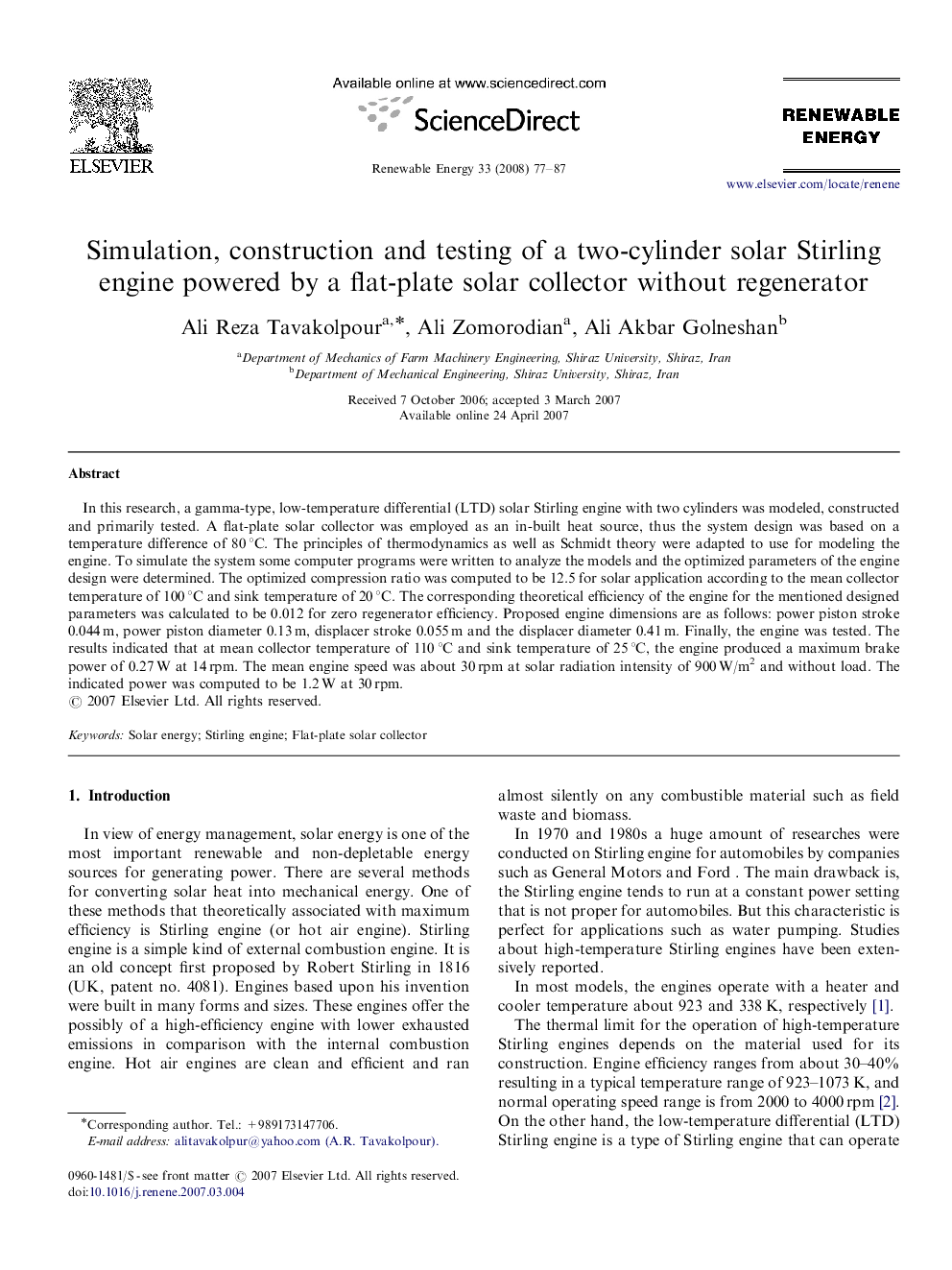| Article ID | Journal | Published Year | Pages | File Type |
|---|---|---|---|---|
| 302691 | Renewable Energy | 2008 | 11 Pages |
In this research, a gamma-type, low-temperature differential (LTD) solar Stirling engine with two cylinders was modeled, constructed and primarily tested. A flat-plate solar collector was employed as an in-built heat source, thus the system design was based on a temperature difference of 80 °C. The principles of thermodynamics as well as Schmidt theory were adapted to use for modeling the engine. To simulate the system some computer programs were written to analyze the models and the optimized parameters of the engine design were determined. The optimized compression ratio was computed to be 12.5 for solar application according to the mean collector temperature of 100 °C and sink temperature of 20 °C. The corresponding theoretical efficiency of the engine for the mentioned designed parameters was calculated to be 0.012 for zero regenerator efficiency. Proposed engine dimensions are as follows: power piston stroke 0.044 m, power piston diameter 0.13 m, displacer stroke 0.055 m and the displacer diameter 0.41 m. Finally, the engine was tested. The results indicated that at mean collector temperature of 110 °C and sink temperature of 25 °C, the engine produced a maximum brake power of 0.27 W at 14 rpm. The mean engine speed was about 30 rpm at solar radiation intensity of 900 W/m2 and without load. The indicated power was computed to be 1.2 W at 30 rpm.
